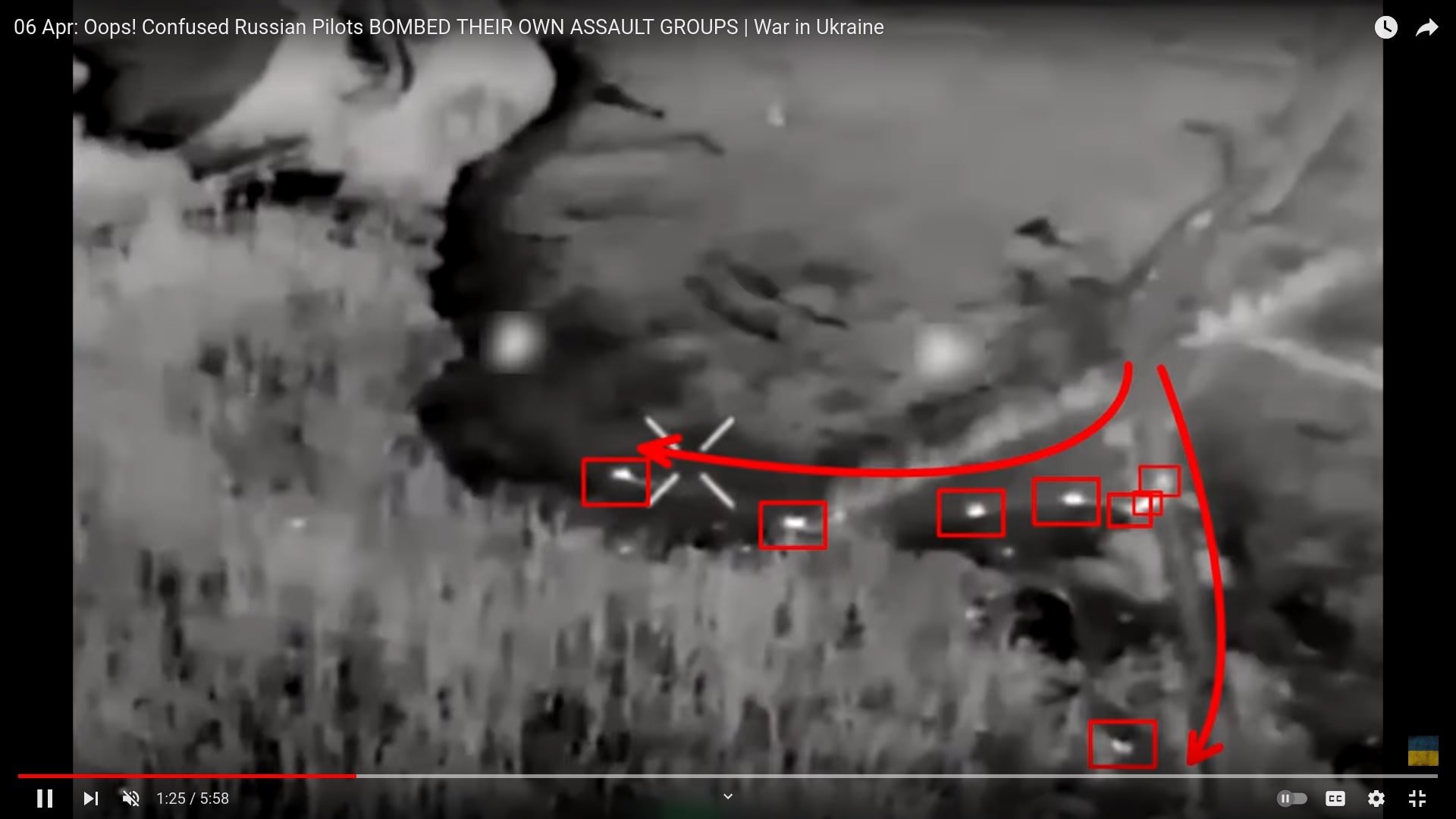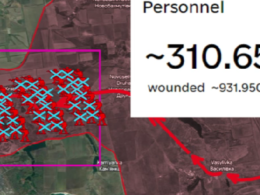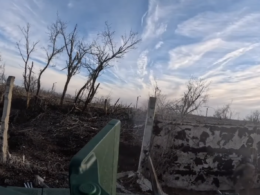As of 6 April 2024, the most intensive fights are taking place on the northern flank of Chasiv Yar in Ukraine's Donetsk Oblast.
Here, Russian forces conducted a series of powerful mechanized assaults and officially started their next great battle – the Battle for Chasiv Yar. Russian forces seem to have thrown every unit at their disposal – professionals and newly mobilized soldiers alike – because while some Russian assault units coordinated well, others had such disastrous coordination that most of them died due to friendly fire.
Previously, Russians managed to advance along the railways and reach the small forest five hundred meters from the first Ukrainian stronghold in Chasiv Yar. According to the freshest updates, Russians tried to maintain their pace of advancement to enter Chasiv Yar from the east. In order to set conditions for the next wave of assaults, Russians conducted artillery preparation on the Ukrainian trenches and bombed the surrounding Ukrainian defensive positions with glide bombs.
After suppressing Ukrainian fire, Russians sent ahead a column of infantry fighting vehicles with infantrymen on board into assault. Russians sent forward a column of eight BMP infantry fighting vehicles, which is twice as much as before. The vehicles tried to keep their distance from each other while maintaining high speed on the road, which made them harder to target by Ukrainian artillery fire.

As the assault group got closer, it split into two units, where one BMP drove directly to the town. This lone BMP was deployed as a decoy in order to divert the focus of the Ukrainian fire from the main assault group. The lone BMP that drove to Chasiv Yar was subsequently destroyed by artillery fire once it stopped, but it managed to dismount an assault squad of Russians, which quickly found themselves under fire as well. The suicide squad was too small, with only around seven troops that a BMP could carry. Even if the Ukrainian strikes did not kill them, other units could not resupply them due to intensive fire, and it would not be worth the risk of more losses to save a squad, so the Russian troops were left on their own and were likely killed.
Meanwhile, the other 7 BMPs dismounted their infantry in the small forest. From here, Russians would try to take control of the forest in order to continue their attempt at taking control of the Kanal district. Combat footage reveals that in one such assault, three BMPs were trying to flee from Ukrainian artillery. Even though all three vehicles successfully dismounted their infantry, the Russian soldiers were immediately targeted by Ukrainian precision strikes.
To make things worse, Russian Sukhoi Twenty-Five close air support aircraft bombed their own forces by accident, minimizing the chances of survival of Russian troops to zero. This displays a lack of coordination and poor communication. Due to complex Russian bureaucracy and centralized command with long decision-making, it takes up to four hours for air support to arrive on strike at designated targets, which, in most cases, are relocated by that time. So, by the time the Russian close air support conducted the airstrike, the Russian ground forces had moved into the targeted zone.

Furthermore, the centralized decision-making in relation to the deployment of air support cuts off regular units from regular soldiers and their platoon leaders from having any form of communication with close air support, thus preventing them from calling off air support that can endanger friendly forces.
Ukrainians knew that Russians would launch direct frontal assaults on the town and dug trenches in front of high-rise buildings and along Zelena and Horbatova streets. At the same time, they set up camouflaged observation points in high-rise buildings for correction of artillery fire and guidance of drone strikes. While Russians did manage to enter eastern parts of Chasiv Yar, it was just temporary, and their only realistic gains were the positions within the forest between the town and Bohdanivka.

The Russian goal is to establish control of the Kanal district of the town, but such head-on assaults on the town would be unsustainable, and it is questionable if Russians can bypass positions that were being fortified for months in advance due to high-rise buildings and trenches.
Russian analysts admitted that Russians will not try to cross the canal and in the best-case scenario, will stop at the canal district and focus on expanding their control northward and southward to secure Bohdanivka and Ivanivske. The Russian assaults on the canal district, therefore, are meant to distract Ukrainian forces and prevent them from asserting fire control from high-rise buildings. If Russian forces establish complete control over the two villages, they will be used as a staging ground for Russian flank attacks on Chasiv Yar from the northern and southern directions. However, launching the attacks across the canal is an incredibly hard endeavor, given that this geographical barrier is located in front of the Ukrainian fortifications in the residential areas.
In our regular frontline report, we pair up with the military blogger Reporting from Ukraine to keep you informed about what is happening on the battlefield in the Russo-Ukrainian war.





